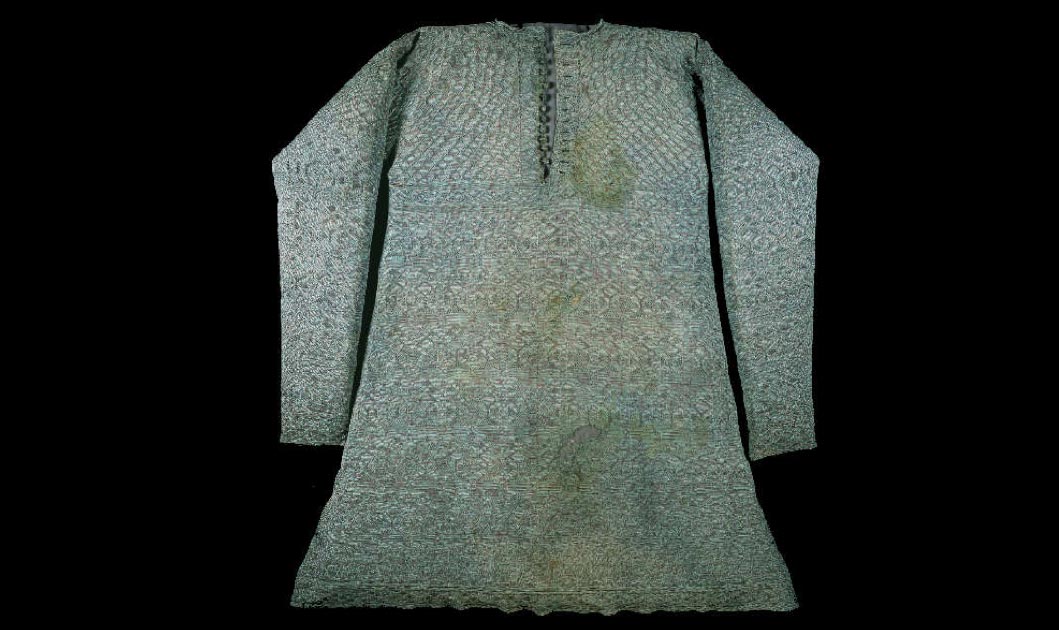Bloodstained Shirt Worn By Charles I At His Execution Is Going Public
It has been announced that the silk shirt that was worn by the English king Charles I at his execution is going on public display. The garment is believed to still have the bloodstains of the monarch. It will be part of an exhibition on public executions in the British capital through the centuries.
On 30th January 1649, King Charles I of England went to a black-draped scaffold outside the Banqueting House in London’s Whitehall. He knelt in front of the crowd and placed his head on a block. Moments later, a masked executioner struck his head off with an ax. The undershirt that he wore that grim day is now in the possession of the Museum of London and is going to be part of a major exhibition.

Charles I's beheading outside the Banqueting House, Whitehall. (Dcoetzee / Public Domain)
Charles I and the English Civil War
King Charles I had tried to impose unpopular religious policies on the country and attempted to rule like an absolute monarch which led to the English Civil War (1642). He was defeated by the Parliamentarian army and imprisoned.
- Rebel Judge and Executioner? The Brutal Cromwellian Conquest of Ireland
- Anne Greene, The Accused Baby Killer Who Refused to Die
- Horrific Prolonged Capital Punishments in Ancient Times

The victory of the Parliamentarian army over the Royalist army at the Battle of Naseby on 14 June 1645 marked the decisive turning point in the English Civil War. (The Illusional Ministry / Public Domain)
He conspired with the Scots and encouraged them to invade England in a bid to restore the old order. However, they were defeated by Oliver Cromwell and this set-in motion a series of events that culminated in Charles I’s death sentence.
Charles I execution day was in the midst of winter and the monarch asked for two shirts so that he would not shiver, which his enemies would take as fear. The piece of clothing held by the museum is a hand knitted blue-green silk garment and Charles wore it as a vest. Meriel Jeater, a curator at the Museum of London, told The Guardian that “this undergarment would have been a good thing to wear in January because it is knitted silk, so it would have been a warm garment”.
The Death of King Charles I
According to the Daily Mail “following the monarch’s decapitation, his body was undressed, and items of clothing were distributed to people present”. It is believed that the shirt was given to a doctor who attended Charles I during his execution. It was in the possession of private individuals until 1925 when it was donated to the National Museum of London with a note authenticating it and outlining its history.
The shirt was placed under UV light to detect bloodstains. Ms. Jeater told The Guardian that the UV caused a fluoresce that “would be expected for sweat and vomit but not blood”. The stains were analyzed in forensic laboratories in 1959 and 1989 to determine if they are blood but the results were not conclusive.
No further tests are possible because of the fragility of the garment’s material. The silk shirt has been kept in a restricted area of the Museum of London, because of its age and historical significance.
Infamous Executions
The shirt is only one of several items that belonged to Charles I that are in the possession of the museum. The Guardian reports that the museum holds the “gloves, sash, fragments of a cloak, and a handkerchief” that belonged to the king and which he possibly wore on the day he was beheaded.

A pair of gloves made of kid leather, fitted with deep gauntlet cuffs of pink silk, trimmed with gold and silver lace and embroidery said to have been worn by Charles I at his execution. (©Museum of London)
These items will also be put on display with the stained shirt for the duration of a planned exhibition. No one is absolutely sure that they are authentic but there is a strong tradition that holds that they are.

A monogrammed handkerchief carried by Charles I will be part of the exhibition. (©Museum of London)
Ms. Jeater is quoted by the BBC as saying that items “help tell the story of one of the most infamous executions”. The exhibition will present items from public from 1196 to 1868. It will provide the stories of the executed and their families. The museum curator told The Guardian that as part of the display, “We are mapping execution sites and also places where bodies were gibbeted, as they were hung in gibbet cages as a warning against crime”.
Public Executions and London
Public executions were part and parcel of London life for centuries. Ms. Jeater told Sky News that they “became embedded in the landscape and culture” of the city. The heads of criminals and traitors were typically placed on spikes on London Bridge, in the Middle Ages and Tudor period.
People regularly attended these bloody spectacles and were expected to show their revulsion of the condemned. The exhibition, with Charles I’s shirt is expected to open in the National Museum of London the in the Fall of 2020.
Top image: Charles I bloodstained execution shirt. Source: ©Museum of London.
By Ed Whelan



















